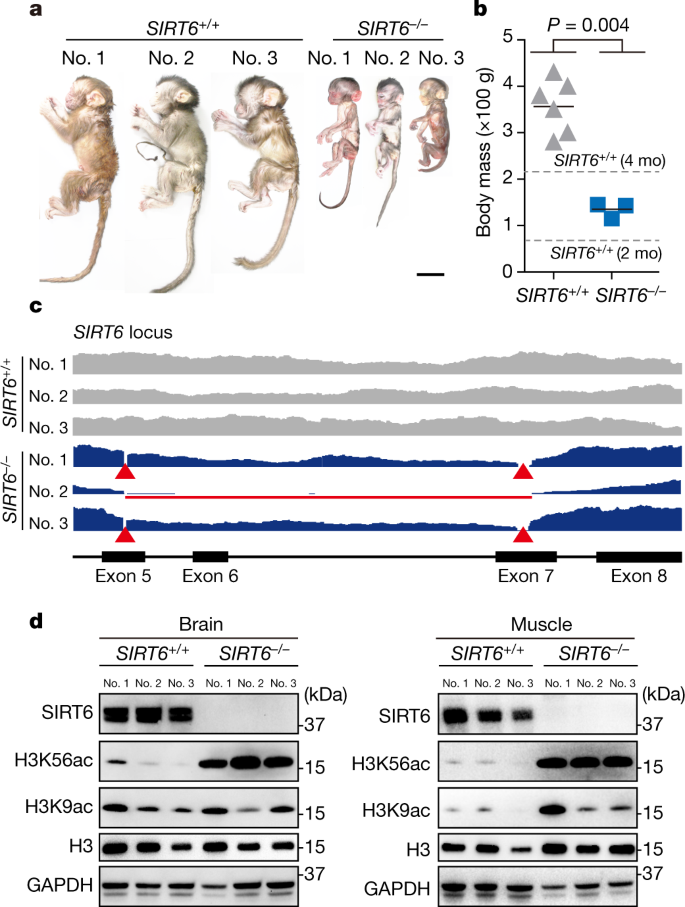It is known that SIRT6 is a longevity protein in rodents, however, its effects on the primate lineage have remained understudied. Researchers created a biallelic SIRT6 null-Macaca fascicularis model utilizing the CRISPR-CAS9 system. This system was then compared to wild-type monkeys to understand the effects of SIRT6. Six sgRNA’s (single guide RNA’s) were designed to target the conserved domains of the SIRT6 gene. Two of the six sgRNA’s had an increase in targeting efficiency of the deacetylase domain of the SIRT6 gene. These two sgRNA’s and the CAS9 mRNA were injected into monkey zygotes and embryos. Results showed that three surrogate mothers produced three viable female offspring whereas one of the surrogate mothers miscarried a nonviable male fetus. The authors evaluated if the CRISPR system was the cause for the miscarriage of the gene-modified monkeys by PCR and Sanger Sequencing. It was determined through the genotyping of several various tissues that founder monkeys had highly efficient biallelic mutations at the SIRT6 gene that didn’t produce any off-target effects of the genome. The non-viable monkey however, had its brain, muscle, liver, kidney, lung and skin tested to see if any disruptions in the SIRT6 gene had occurred. Yields showed that the SIRT6 protein was not detected. The CRIPSR CAS9 approach was a success! The phenotype of the SIRT 6 null monkeys weighed 3.5 times less than the wild type monkeys but were similar with the gestational age of 2-4 months. They also had lower bone-densities and were absent of subcutaneous fat. Results showed that an absence in SIRT 6 leads to developmental retardation in monkey’s where the fetus looks like it’s premature.
Warrenkevin Henderson
Potluck
https://www.nature.com/articles/s41586-018-0437-z#Fig5


No comments:
Post a Comment